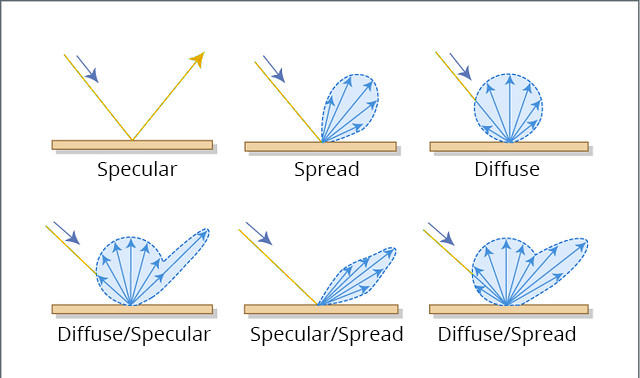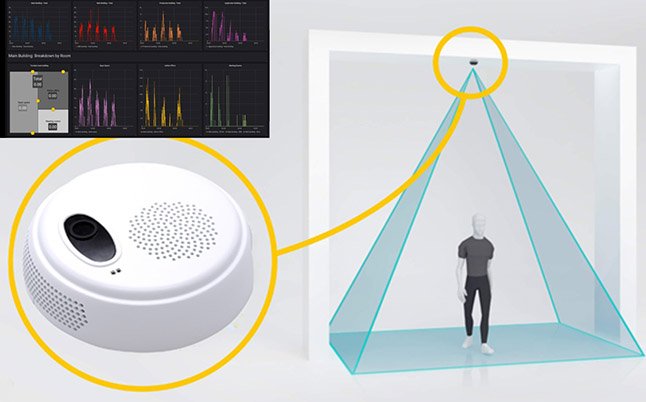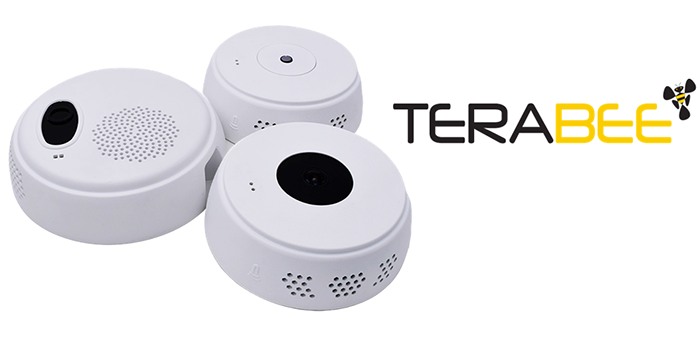Time-of-Flight sensors can see the world in 3D. They do this by using reflections of infrared light to gather information about the distance of the objects in their Field of View.
Time-of-Flight sensors “see” by emitting pulses of invisible infrared light, then timing how long it takes for them to reflect off surfaces in the environment and return to the sensor. Because light travels at a constant speed, the amount of time taken for light to travel this distance is proportional to the distance the light has traveled — this is known as the Time-of-Flight (ToF) principle.
Measuring the time taken for an infrared pulse to return to the sensor enables a Time-of-Flight sensor to calculate the round-trip distance that the light pulse traveled, and hence the distance of the surface that the light reflected from.
What can a Time-of-Flight sensor do?

By measuring the distance of multiple points in its Field of View, a Time-of-Flight sensor can effectively take 3D snapshots of the world around it. In the data produced by a Time-of-Flight camera, the brightness of each pixel corresponds to the depth (or distance) of that part of the scene.
Compared to other depth-sensing technologies (like structured light or stereo vision systems), Time-of-Flight sensors are relatively cheap. (2) They’re also versatile: because Time-of-Flight sensors detect the light they emit, they work perfectly in low-light conditions.
Capable of frame rates more than 130 frames per second, Time-of-Flight sensors are ideally suited to real-time applications. In addition, small form-factors and low rates of power consumption mean that Time-of-Flight sensors can be easily integrated into a variety of different systems.
Time-of-Flight sensor applications
Time-of-Flight sensors are particularly well-suited to people counting applications. By quickly and accurately recognizing people entering and exiting, Time-of-Flight cameras can provide valuable occupancy data with none of the privacy concerns associated with other people counting technologies as they are fully GDPR compliant by design.
Introducing People Counting L-XL
People Counting L-XL from Terabee is a people counting device based on Time-of-Flight technology.

Fixed above a doorway, the People Counting L-XL provides immediate access to valuable real-time occupancy data.
By revealing exactly how spaces are used, the People Counting L-XL provides data that helps make spaces safer, more effective, and more comfortable. Applications include:
- Optimizing real-estate expenditure and use of space in offices
- Automating lighting, heating, and other systems in smart building applications
- Enhancing staff scheduling and improving customer experience in shops and other commercial spaces
Crucially, the People Counting L-XL is intrinsically anonymous: low spatial resolution ensures that no personal identifiable information (PII) is ever captured, while smart onboard image-processing algorithms can still reliably count traffic with 98% accuracy or higher.
The People Counting L-XL features a wide 74° x 57° detection area, enabling it to monitor a 3.4 m wide area from a height of 4 m. Multiple devices can be easily synchronized to cover wider areas.
Integration with existing systems
Terabee people counters are designed to seamlessly integrate with existing infrastructure and systems, making implementation straightforward for educational facilities. Whether it be integrating with access control systems, building management systems, or data analytics platforms, these counters offer compatibility and flexibility, allowing universities to leverage existing investments while enhancing their operational capabilities.
The People Flow Counting L-XL LoRa and People Flow Counting M 2.0 LoRa devices use LoRaWAN, which eliminates the need to install PoE cables or connect to the main IT system. This makes them ideal sensors for historic buildings which can be common in universities. The LoRa-enabled solution avoids the need to retrofit Ethernet cabling, which can be both expensive and time-consuming.


